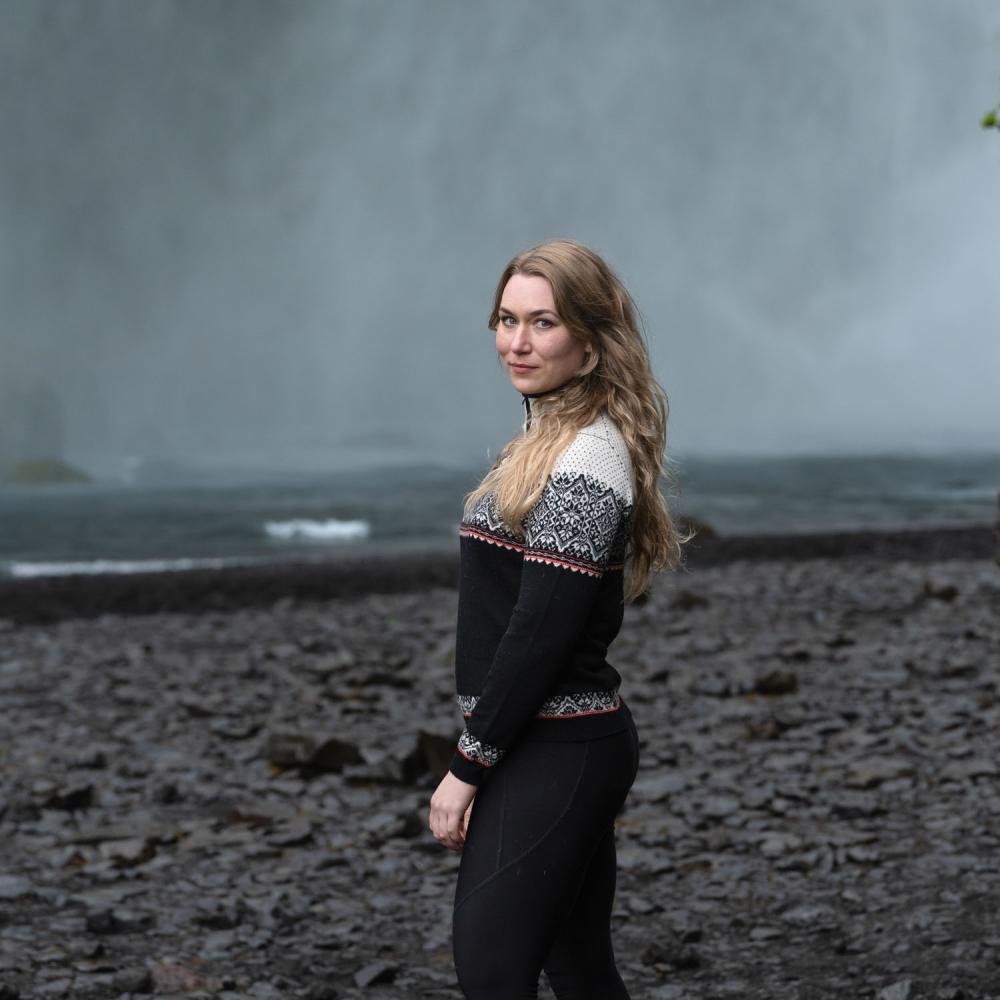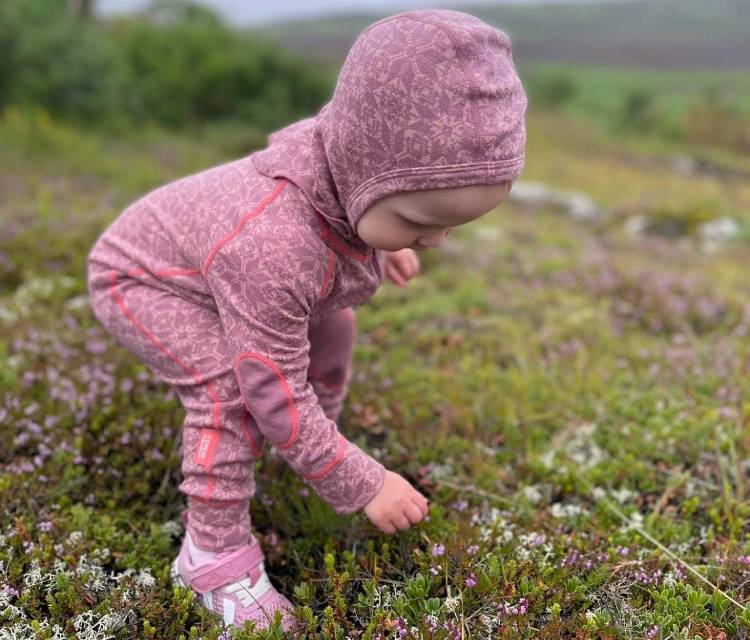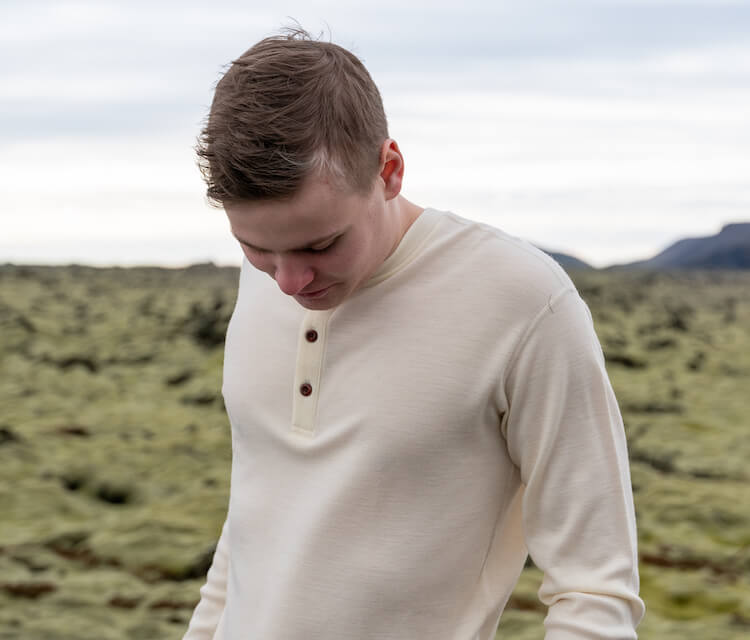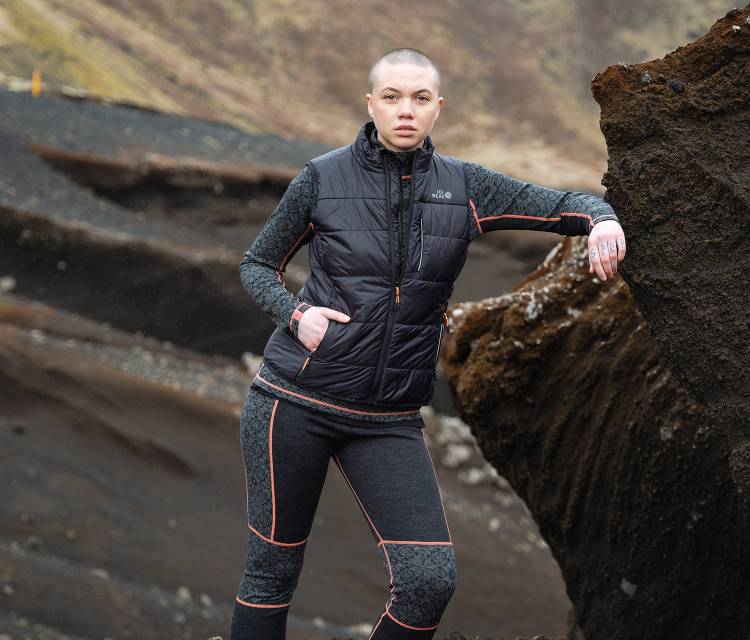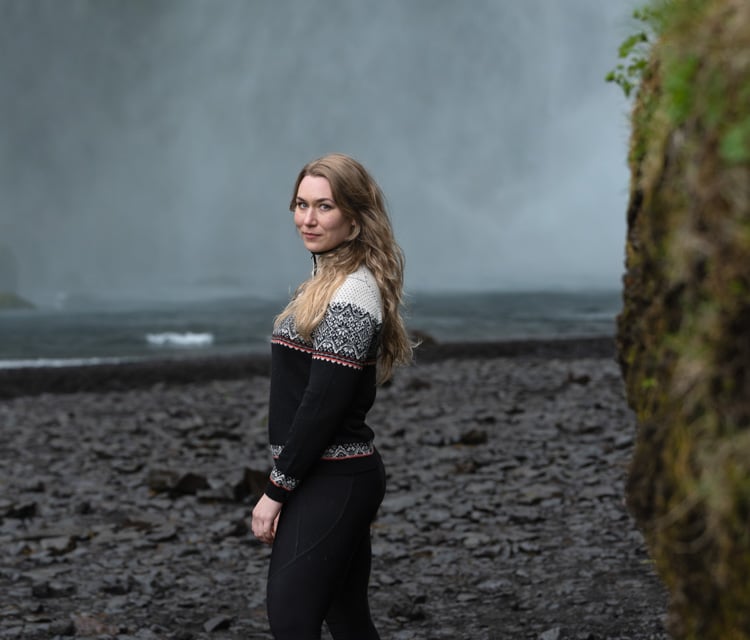CONTENTS:
When you think of “wool,” what do you picture?
Maybe you imagine the ugly sweater contest at your office over the holidays. Or maybe you remember that scratchy knit your aunt Linda made you wear when you were six.
If you picture a scratchy sweater, you haven’t owned anything made of Merino wool. This natural fiber comes from Merino sheep. It’s thinner than most other wools, making it super soft. This fine wool fiber is perfect for layers that sit directly on the skin, and for maintaining dexterity in things like gloves. Merino wool brings all the other natural benefits of wool, too, like temperature regulation and odor control.
The fine fibers of Merino wool also give you more fashion options than you can imagine. You’ve heard of cashmere, right? Surely, your idea of cashmere isn’t “scratchy.” Merino wool and cashmere are in the same ballpark of soft, fine wool.
What else haven’t you heard about Merino wool before? Where does Merino wool come from, and what else is there to learn?
Where does Merino Wool come from?
Merino wool is a sheep’s wool that comes specifically from Merino sheep. Of all the mammals walking the earth, sheep have the greatest diversity of breeds. This makes for many kinds of sheep’s wool. Merino wool is one of them.
Geography and climate affected sheep around the world, population by population, which is why there are so many breeds with their own types of wool. For instance, Icelandic sheep are genetically unique after centuries of isolation.
Merino sheep were originally from Spain, but the popularity of their wool led to producers breeding them around the world. Merino wool is much finer than most other sheep’s wool. It has a diameter of around 20 microns (about 1/3rd the diameter of the average human hair), and it also has smaller scales. Did you know that wool fibers have tiny scales running up and down the shafts?
These qualities mean that Merino knits are ultra soft, lay flat, and have an almost silky quality to them.
Merino wool is also great for temperature regulation thanks to the natural pockets that the wool crimp leaves for air flow. This built-in temperature management makes it an increasingly popular wool for outdoor wear, especially for activities like hiking where you heat up over the course of activity.
Merino Wool in the Wool Industry
Merino wool costs a little more than other sheep’s wool since it has a lower yield. Finer fibers means less wool in sheer weight.
The production process for Merino wool impacts the total yield, too. The scouring process the wool undergoes to remove fatty greases from the hairs is necessary, but it does mean that the total yield is only half of the original shear weight.
Industry-wide, Merino wool is considered one of the finest and more luxurious kinds of sheep’s wool.
You can get an even better idea about the role of Merino wool in your wardrobe with this side-by-side comparison of Merino wool versus other kinds of wool.
Top Types of Wool (and How They’re Used)
To build the best wool sweater collection ever, you need to know what kinds of wool are out there. This list is not exhaustive, but it does call out some of the most popular types of wool used in clothing today.
For starters, when people think of wool, they usually think of sheep. There are about 1.2 billion sheep on the planet producing wool this year, so the association makes sense. However, it isn’t the whole truth.
Keep reading to learn about some of the most popular kinds of wool and how each is used.
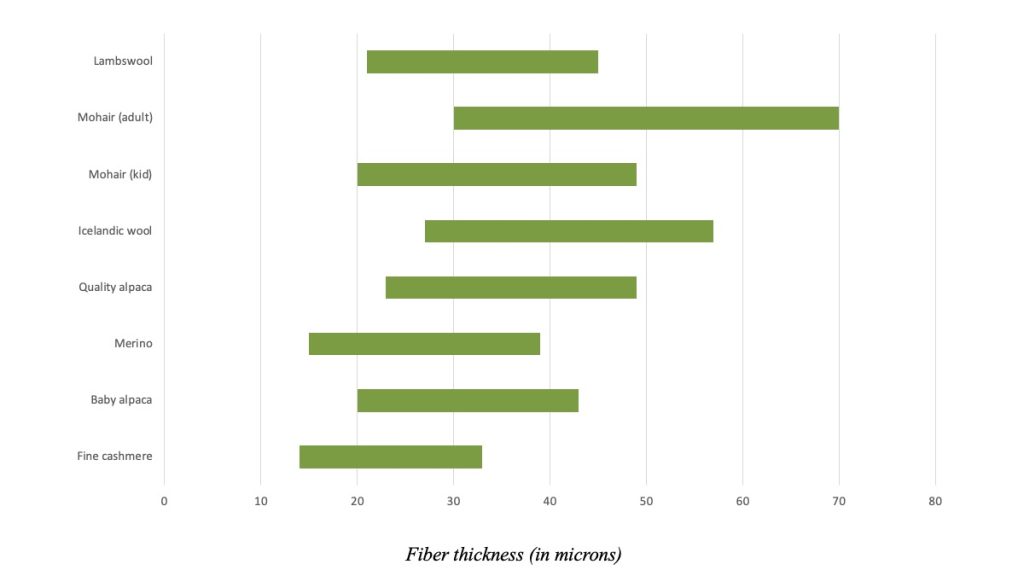
Why choose lambswool?
Lambswool is the wool made from a young sheep’s very first shearing. Just like parents go “ga-ga” over their kids’ first haircuts, a lamb’s first shearing is a noteworthy moment. The wool gathered is extra soft, smooth, and resilient.
Interestingly, because that first shear can come when a lamb is just a few weeks old or when it’s as old as seven months, the textures of the virgin lambswool can vary greatly.
Of course, this wool is also far rarer since each lamb will only be sheared for the first time once. (Adult sheep in Iceland, in contrast, are shorn two or three times a year.) Lambswool is priced a little higher as a result.
Because lambswool tends to be extra soft, it’s a great choice for bottom layers. Its natural hypoallergenic and breathable qualities make it comfortable for any season, too. The natural crimp to its fiber allows airflow to regulate body temperature, making it a great choice for days when you might be spending time both inside and out.
Lambswool should always be hand washed, much like other wool garments. Machine washing lambswool will rob it of its characteristic softness.
Why choose Icelandic wool?
The panoramic of wool production in Iceland has changed as companies have come and gone, but demand for Icelandic wool has only risen. There are over 800,000 sheep in Iceland. There are more than 2,000 farmers that shear 1,000 tonnes of wool annually. After processing, this turns into 750 usable tonnes of wool ready to be spun into knitting wool.
Icelandic sheep are genetically unique from any other sheep in the world. Their wool will also vary based on where they grazed and what climate they were raised in.
It’s been said that without sheep and their wool, Iceland would have been uninhabitable when people first settled there. Iceland has more temperate weather than many would expect with the word “ice” in its name, however the role of sheep’s wool truly has been fundamental in the country’s cultural, climatic, and economic history. Wool even played a part for Viking sailors in their ship sails.
Another unique thing about Icelandic wool is that it consists of two different types of fiber:
- The inner fiber is fine and soft.
- The outer fiber is long and water-repellent.
This unique combination makes for a lightweight, warm, breathable, and water-resistant wool ideally suited for outer layers and outdoor wear.
Caring for Icelandic wool is simple, too. It rarely needs washing because of wool’s natural antibacterial and moisture-resistant qualities. Before you wash it, consider hanging it out in fresh air to effectively “reset” any odors.
Why choose Merino wool?
Merino wool shares important qualities with other types of wool. Merino fibers are natural body temperature regulators. Merino wool also wicks away sweat, which is ideal for inner layers touching the skin during outdoor adventures. Merino wool is also odor-resistant and naturally antibacterial.
Merino has special unique advantages, too. Because of the smoothness of Merino fibers, its softness is due to fineness and to an overall silky quality that it has. This makes Merino extremely comfortable. Merino wool is also so fine and delicate that each fiber lays down under the weight of the other fibers around it. This means that no garment made of Merino wool can ever be prickly or scratchy.
Merino wool also “plays nice” with other kinds of wool. With a soft Merino layer against the skin and a thicker article like an Icelandic wool sweater layered on top, the two types of wool work together to regulate body temperature in even the most extreme conditions.
Caring for Merino wool also favors handwashing because it’s so fine. The good news is that it rarely needs to be washed thanks to a waxy coating called Lanolin that protects it naturally from stains.
Other Types of Wool
Other animals yield wool, too. Some of the most popular types include:
- Cashmere: Cashmere goats produce cashmere wool, which is known for its softness (due to its production from the undercoat of goat hair). The undercoat wool is shorn when the goats enter molting season. Its yield is small, making cashmere a little pricier than other types of wool.
- Mohair: Mohair goats produce a popular wool known for its unique structure. The topcoat usually includes the guard hairs, which—once mixed with the undercoat fibers—are knit into a uniquely fuzzy composition.
- Angora: Wool made from rabbit hair is called angora, which is known for its hollow fibers. This gives angora wool unique warmth, though the ultra-soft fibers are also delicate and sometimes require extra care.
- Camel: Bactrian camels are the camels typically shorn for their wool. They're native to Mongolia, China, and Russia, which explains their thick hair (which keeps them warm in harsh winters). Camel wool is also hollow like angora fibers, making it lustrous and roughly as soft as cashmere.
- Alpaca: Native to South America in the heights of the Andes, alpacas produce another wool fiber that's hollow and lightweight. It's lighter than sheep's wool, but also warmer. This makes it excellent for high altitudes.
How is wool made?
Wool production begins by shearing the hair of wool-bearing animals. In the case of cashmere, that only happens once a year when goats enter molting season. For other wool types, that might happen multiple times throughout the year.
Here’s a high-level summary of how shorn hair turns into the wool you love:
- Wool is shorn
- Wool is cleaned
- Cleaned wool is sorted into bales
- Fibers are made into longer strands (this is called “carding”)
- Strands are spun into yarn (“spinning”)
- Yarn is knitted or woven into garments
What kinds of wool do you have in your closet? Are you ready to pick out your first Merino wool product?
Bibliography
- https://www.icewear.is/us/blog/2019/06/12/is-icelandic-wool-itchy/
- https://iwto.org/sheep/
- https://www.icewear.is/us/blog/2018/06/14/what-makes-icelandic-wool-special/
- https://icelandunlimited.is/know-about-icelandic-sheep/
- https://www.icewear.is/us/blog/2020/07/21/icelandic-knitting-patterns-with-lopi-yarn-to-make-a-lopapeysa/

